Dec 08, 2017PRESS RELEASE
LAICA telescope on interplanetary microspacecraft captures first image of hydrogen geocorona extending more than 240,000 kilometers
Keyword:RESEARCH
OBJECTIVE.
The Lyman Alpha Imaging Camera (LAICA) on board the Proximate Object Close Flyby with Optical Navigation (PROCYON) microspacecraft successfully obtained an image of hydrogen geocorona (light emissions by hydrogen atoms) on January 9, 2015, capturing for the first time hydrogen atoms that originated on Earth and extend 240,000 kilometers from our planet. The PROCYON spacecraft was in deep space about 15 million kilometers from Earth.
Main points of research result announcement
– The observed distribution of the hydrogen exosphere, in which hydrogen and helium atoms are the dominant components, was ecliptic north-south symmetry, which differed from what had been assumed. This suggests the magnetized plasmasphere is not the dominant process shaping the outer hydrogen exosphere.
– It is essential to observe the extending hydrogen exosphere to discover a life-supporting, Earth-like planet outside the solar system. A plan to put observation equipment similar to LAICA on the Russian-built World Space Observatory UltraViolet (WSO-UV), a 1.7-meter telescope, is being considered. Russia has expressed willingness to carry such equipment.
Outlines of research result announcement
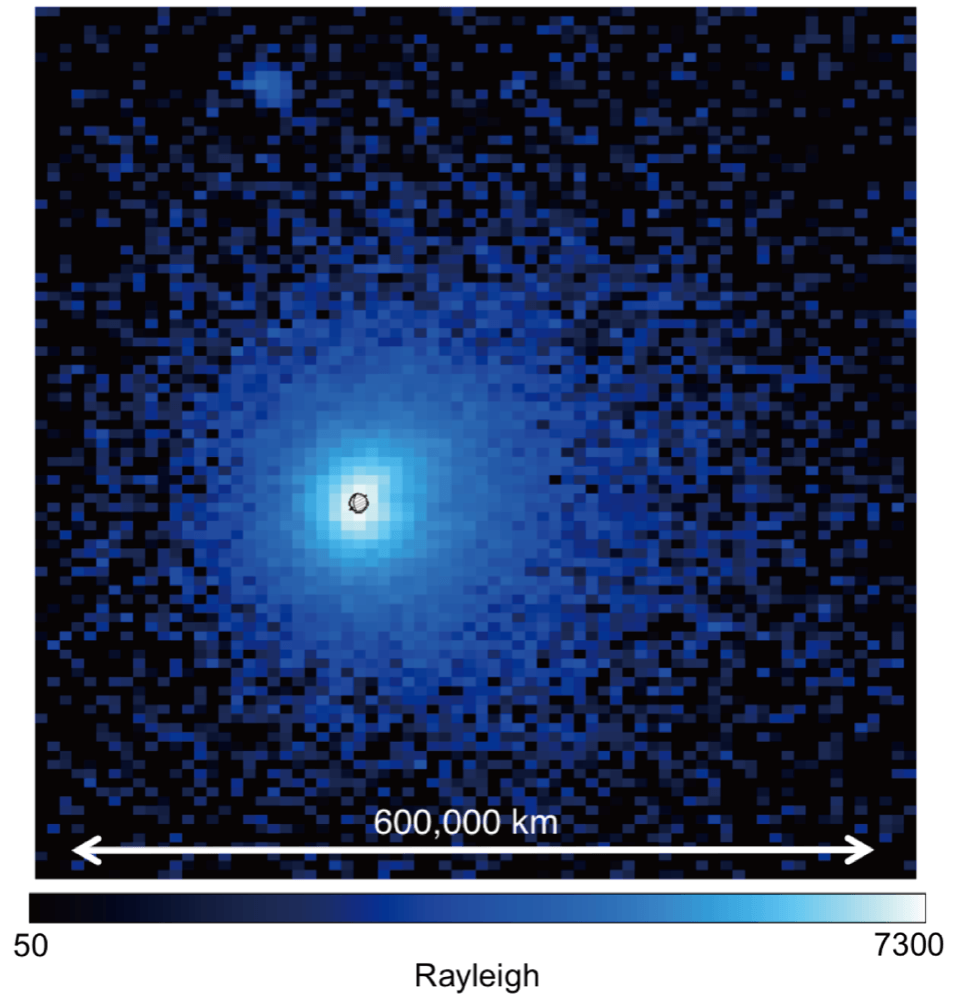
The image of hydrogen geocorona LAICA captured on January 9, 2015. The circle in the center shows Earth’s position and size. The sun is to the left. The image shows hydrogen atoms are extended by solar radiation pressure toward the direction away from the sun. At the top center-left is the planet HIP83238.
In addition, a research team led by Associate Professor Shingo Kameda of Rikkyo University’s College of Science discovered the hydrogen exosphere’s shape is different from what had been assumed based on past observations. The team also demonstrated the distribution of the hydrogen exosphere is not very susceptible to influences from activity in the magnetized plasmasphere (Figure 2 (a)). Furthermore, the team developed a new analytical model that is far simpler than the conventional, complicated models. The new model is capable of reproducing the distribution of the hydrogen exosphere using three parameters: exobase temperature, exobase density and solar radiation pressure (Figure 2 (d)).
These research results were published in Geophysical Research Letters, a U.S. scientific journal, on December 8, 2017. AGU, the academic association that publishes the journal, selected the article for publication in Research Spotlights, which carries excellent research results.
Research background
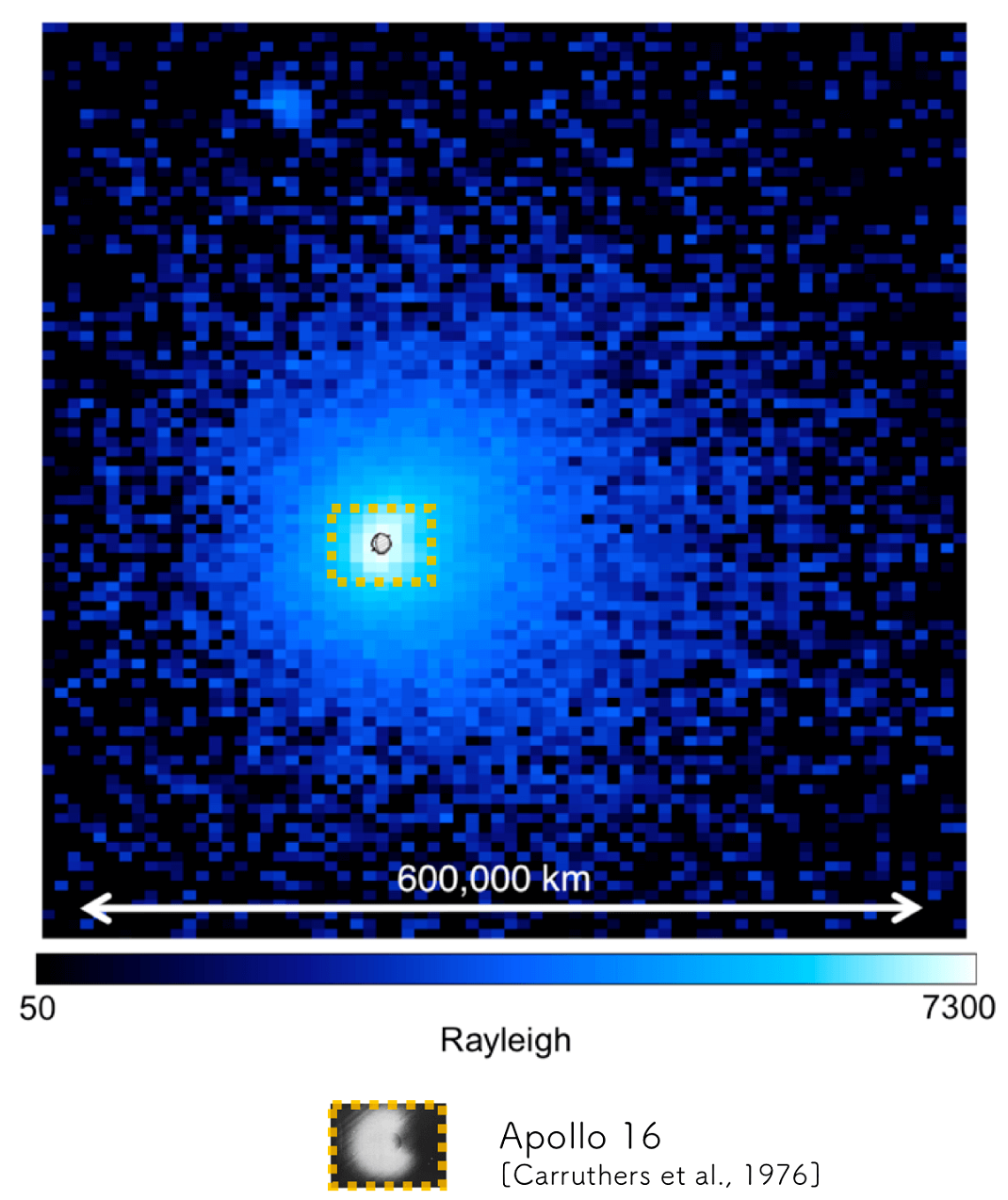
Figure 1 (b) Comparison of the field of view in the observation by Apollo 16, below, and LAICA’s observation, above. The above image show a wider field of view, while capturing light emissions several times further away compared with the one taken by Apollo 16 astronauts, thanks to the telescope’s higher sensitivity.
Kameda’s research team, which included graduate students, developed LAICA with the purpose of capturing images of hydrogen geocorona from deeper in space. The team designed and built LAICA and conducted experiments to confirm if the camera could withstand the impact of rocket launch as well as drastic changes in temperature expected inside PROCYON. The team completed the telescope within half a year after planning started. The project required developing a new adhesive technology to glue the telescope’s glass mirrors and metal components. The team discovered a way to glue them together after considerable trial and error at their lab on the Ikebukuro campus. The documents explaining details including procedures, materials needed for the adhesive technology and time needed for adhesion number more than 20 pages. The meticulously prepared telescope was demonstrated to be strong enough to withstand the rocket launch and harsh conditions in space. LAICA was launched on board PROCYON in December 2014.
Research results
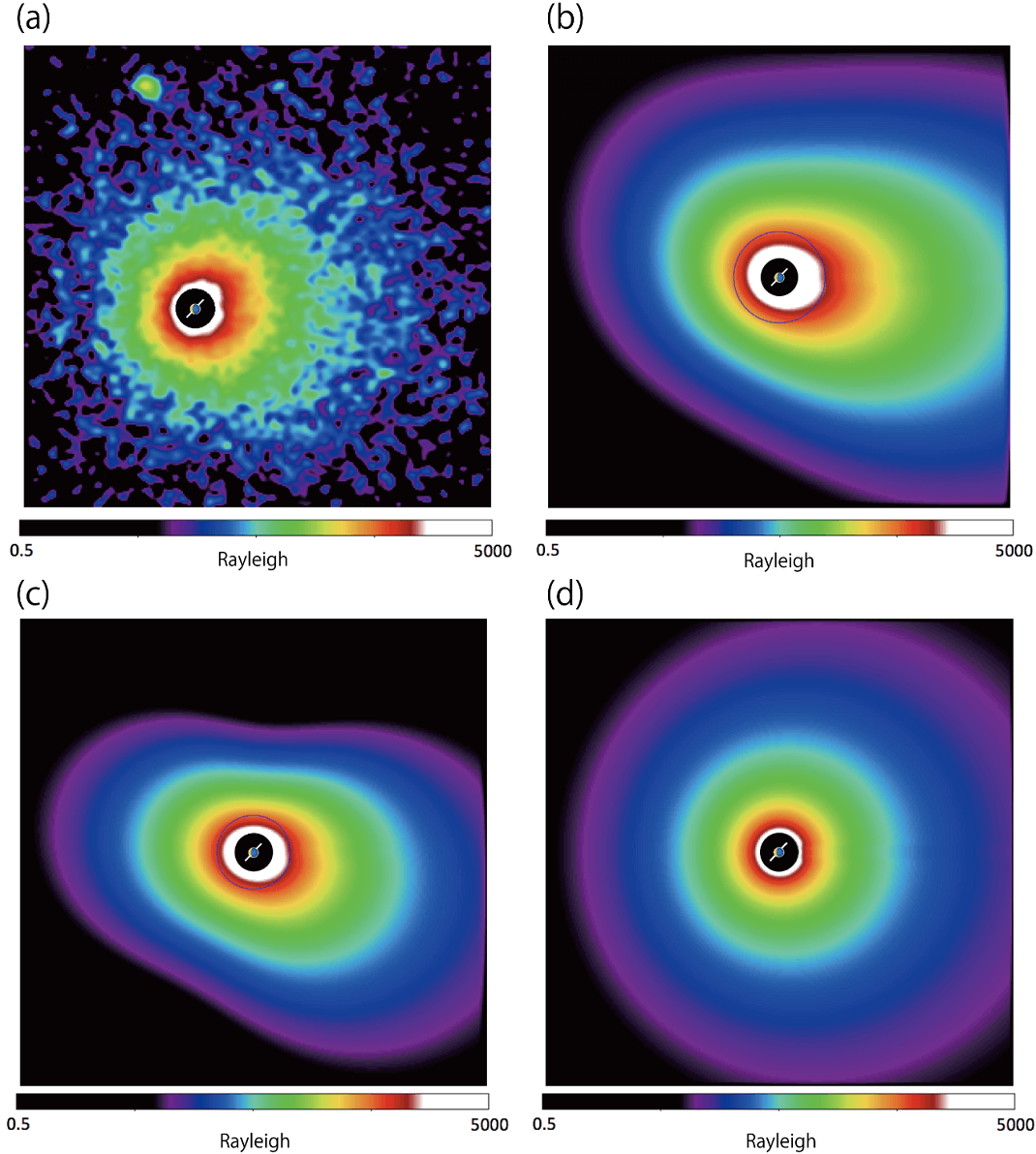
Figure 2 Comparison between observed and modeled emission intensity. Figure 2a shows the distribution of hydrogen geocorona shown by the LAICA observation. Figures 2b and 2c show the presumed distributions based on observations done inside the hydrogen geocorona, respectively by Hodges, 1984, and Zoennchen et al., 2013. Distributions inside the blue circle are based on the observation data, while those outside the circle were presumed by extrapolation. Figure 2d shows the results of calculations using the new model we proposed in this research. It is difficult to estimate the distribution outside the hydrogen geocorona based on data gathered inside it. The team was able to accurately capture the entire hydrogen geocorona from observations taken at a distant location deep in space.
In addition, the observation conducted in 2015 from the outer exosphere showed that the hydrogen geocorona’s shape is quite different from what had been assumed. The shape of the hydrogen exosphere is not very susceptible to activity of the magnetized plasmasphere (Figure 2 a). Furthermore, the team developed a new analytical model to explain the observation data. The new model is much simpler than the complicated, conventional models. It demonstrated that the distribution of the hydrogen exosphere can be reproduced with only three parameters – exobase temperature, exobase density and solar radiation pressure (Figure 2d). The team captured an accurate picture of the entire hydrogen geocorona by taking advantage of a rare opportunity in which PROCYON went beyond the geocorona.
Future steps
When Rikkyo University initially joined the PROCYON project, there were concerns about the short period of time available for developing LAICA in what was the world’s first attempt to send an interplanetary microspacecraft deep into outer space. Even within Rikkyo University, doubts were raised about the requirement to develop LAICA in such a short period, particularly given that Rikkyo University struggled to meet the tight deadline to develop a camera for Hayabusa2, a Japanese asteroid explorer launched in 2014.
Despite this, the team completed the LAICA project within half a year from when planning began and for one-tenth of the cost of conventional observation equipment put on microspacecraft for missions into deeper outer space – a feat that could eventually lead to faster, cheaper development of micro-equipment. Their endeavors were underpinned by the belief that ultraviolet observations are pivotal in studying Earth-type planets outside the solar system. The team said it was fortunate to be approached by Russia for this large-scale project just as it was considering making the equipment slightly larger as a next step, shifting the microspacecraft to a small-sized spacecraft. To capitalize on this valuable opportunity, Rikkyo University will push ahead with technology development for enhancing the performance of equipment for observing planets similar to Earth outside the solar system.
Glossary
Lyman Alpha Imaging Camera (LAICA)
A group of students mainly from Rikkyo University and the University of Tokyo developed LAICA to capture the distribution of the Lyman alpha line, a spectral line of hydrogen with a wavelength of 121.6 nanometers, in collaboration with the Japan Aerospace Exploration Agency (JAXA). LAICA mainly consists of a light detector and a telescope, which was assembled at Rikkyo University’s Ikebukuro campus. The telescope’s development was completed in a very short period, with the planning, building and performance tests completed in only half a year. The telescope is equipped with a special mirror that boosted reflectance in the vacuum ultraviolet region, where the Lyman alpha line is found. To protect the mirror, Rikkyo University glued it to a sheet of aluminum alloy. The university has applied for a patent for this procedure, an application that has been publicized in a gazette issued by the Japan Patent Office.
Proximate Object Close Flyby with Optical Navigation (PROCYON)
A microspacecraft developed by the University of Tokyo and JAXA’s Institute of Space and Astronautical Science to conduct experiments on equipment and necessary technologies for dealing with conditions deep in outer space, such as whether its power supply and communications equipment are robust enough, and whether it can control its position and orbit. PRYCYON was launched together with Hayabusa2 on December 3, 2014.
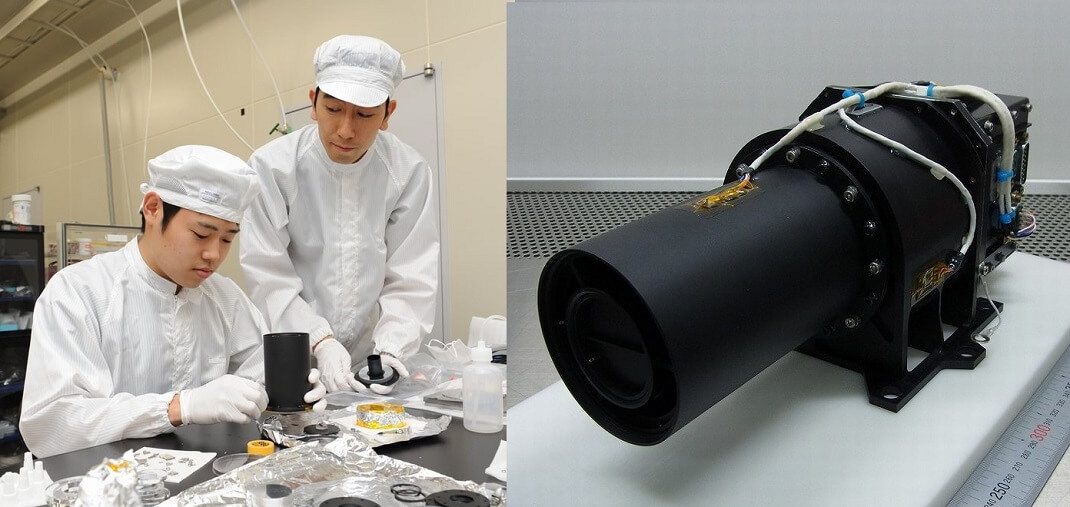
Left: Students develop the telescope. Right: The completed LAICA
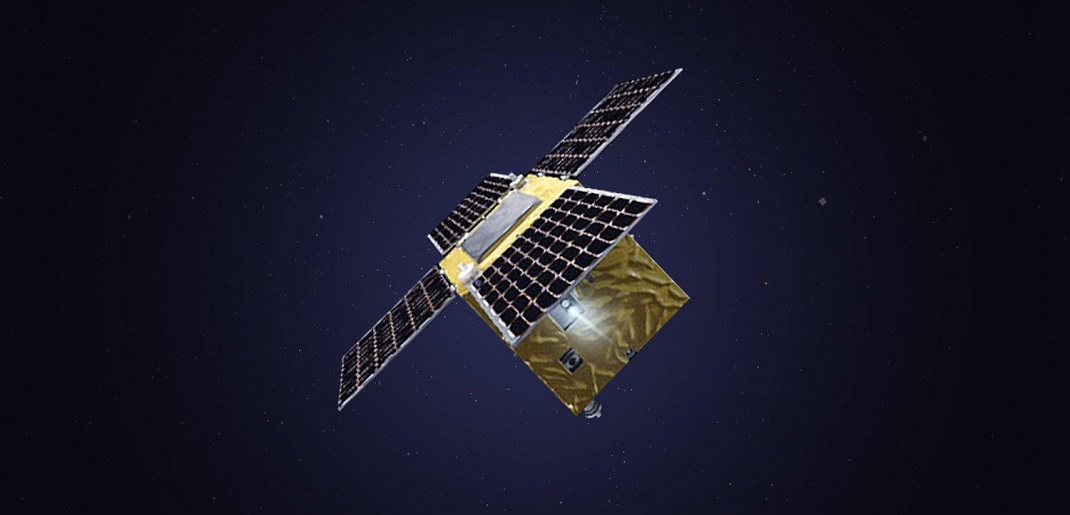
The PROCYON microspacecraft
Journal that carried the article: Geophysical Research Letters
DOI: 10.1002/2017GL075915
Authors:
S. Kameda (Rikkyo University)
S. Ikezawa (Graduated from Rikkyo University’s College of Science in 2016)
M. Sato (Graduated from Rikkyo University’s College of Science in 2015)
M. Kuwabara (University of Tokyo’s Department of Complexity Science and Engineering)
N. Osada (Rikkyo University’s College of Science)
G. Murakami (Institute of Space and Astronautical Science)
K. Yoshioka (University of Tokyo’s Department of Earth and Planetary Science)
I. Yoshikawa (University of Tokyo’s Department of Complexity Science and Engineering)
M. Taguchi (Rikkyo University’s College of Science)
R. Funase (University of Tokyo’s Department of Aeronautics and Astronautics)
S. Sugita (University of Tokyo’s Department of Earth and Planetary Science)
Y. Miyoshi (Nagoya University’s Institute for Space-Earth Environmental Research)
M. Fujimoto (Institute for Space and Astronautical Science)